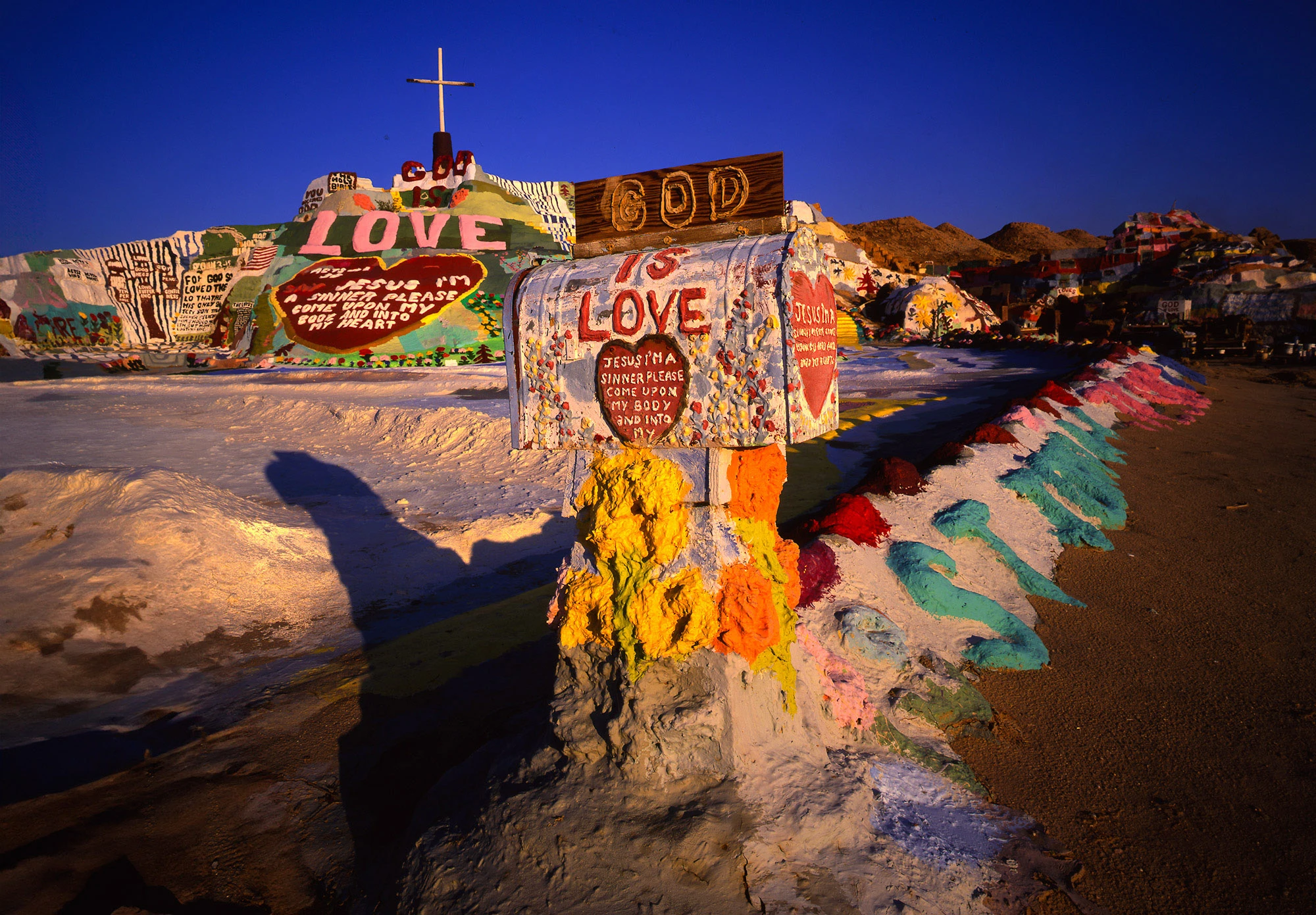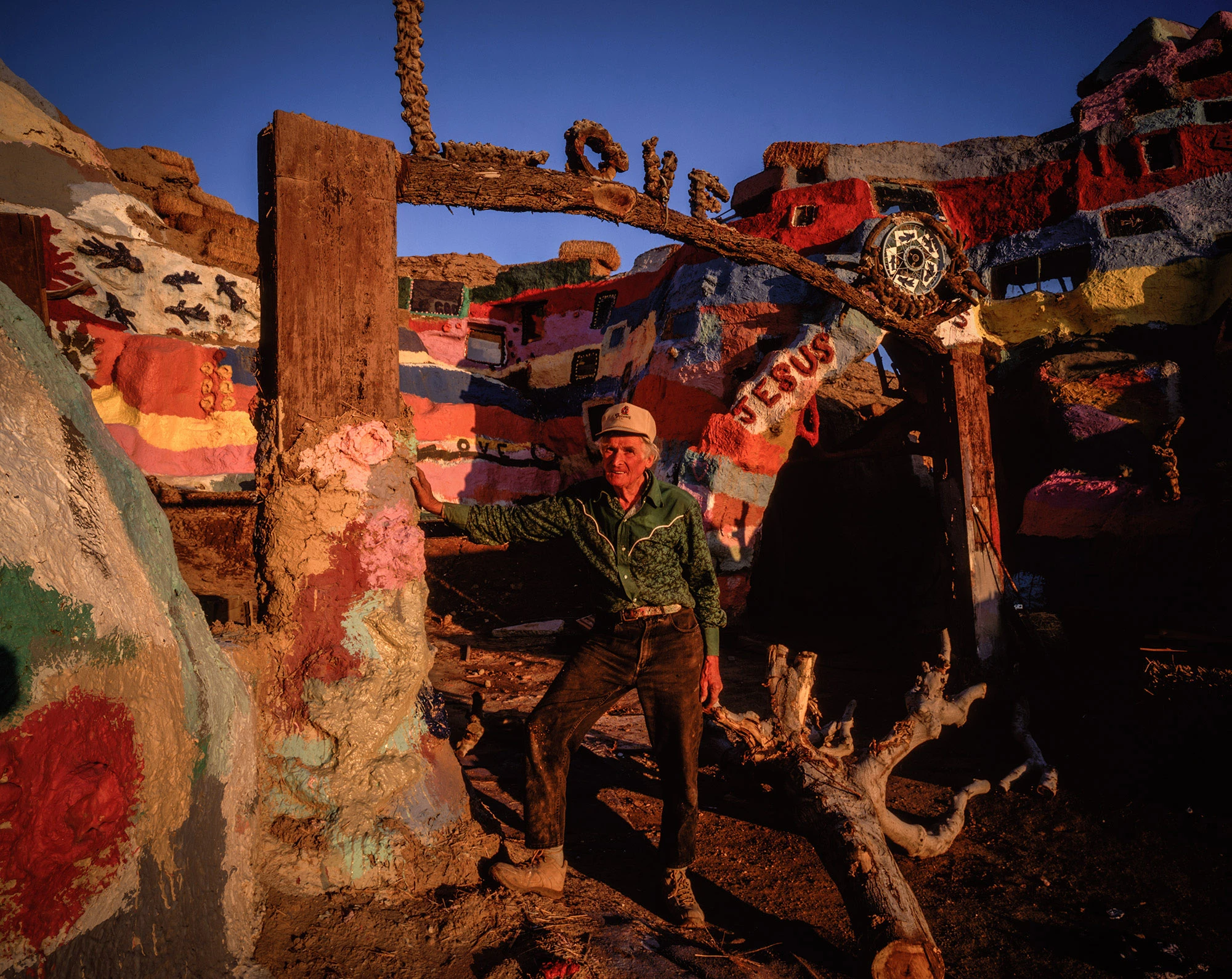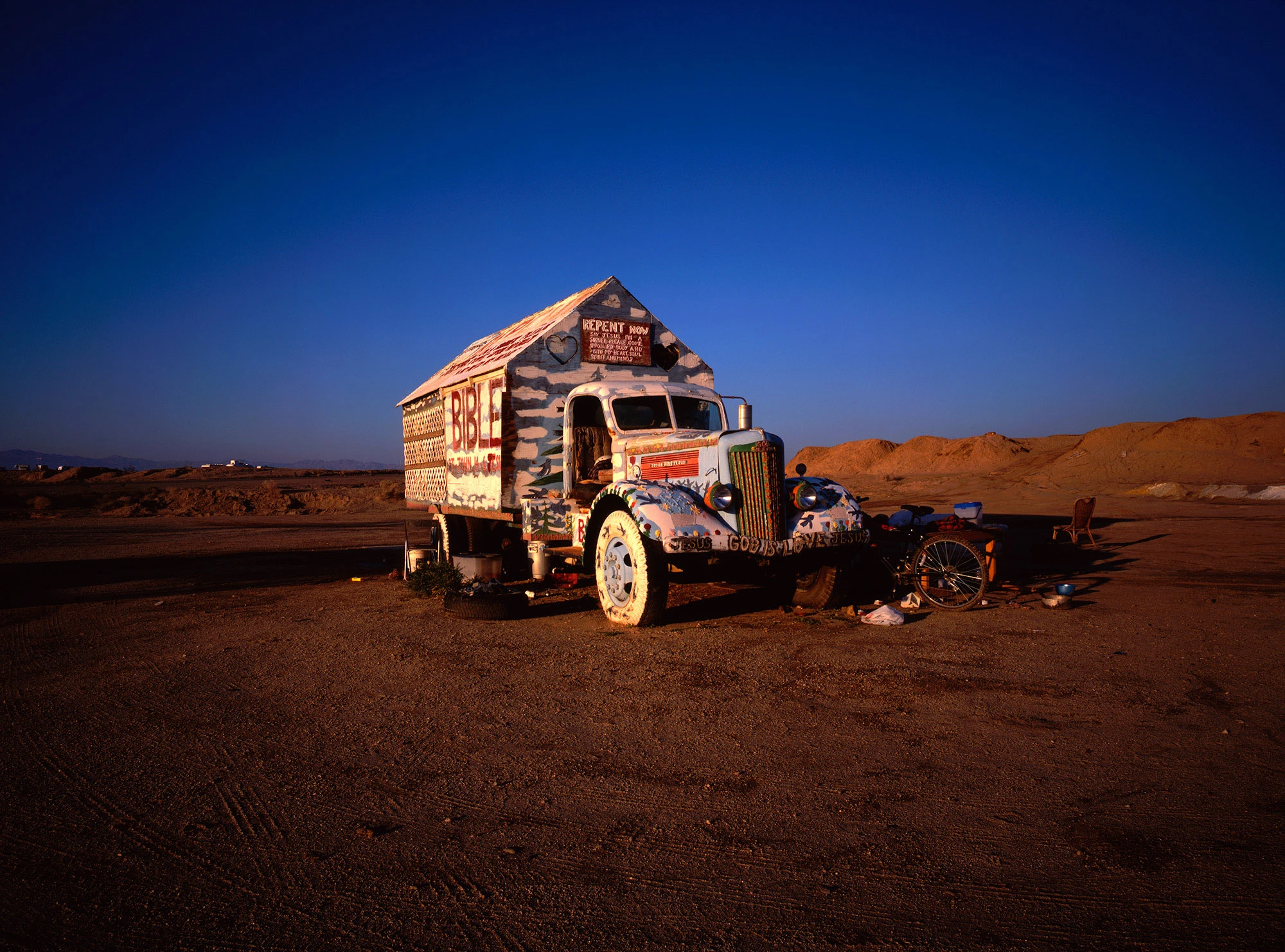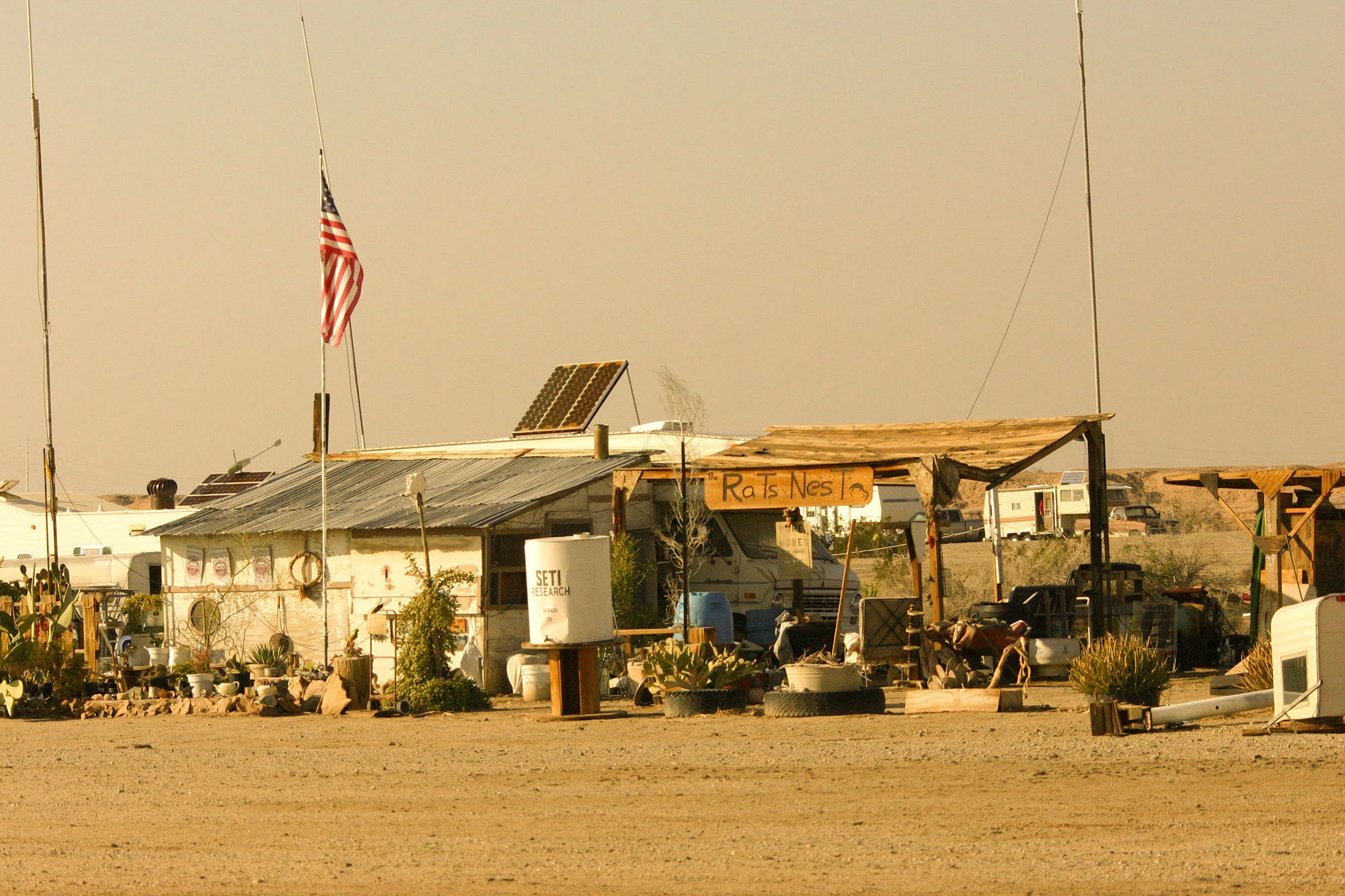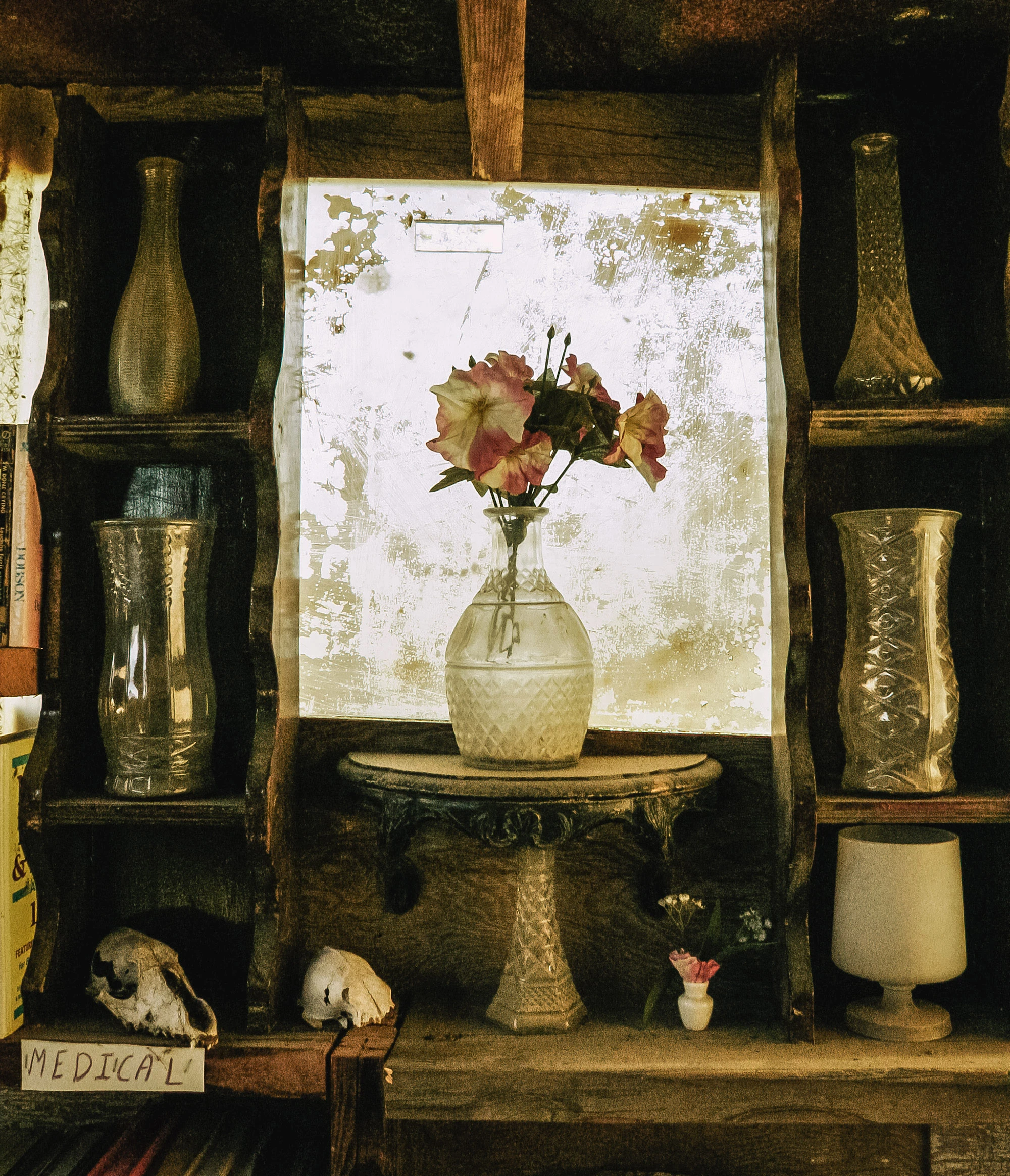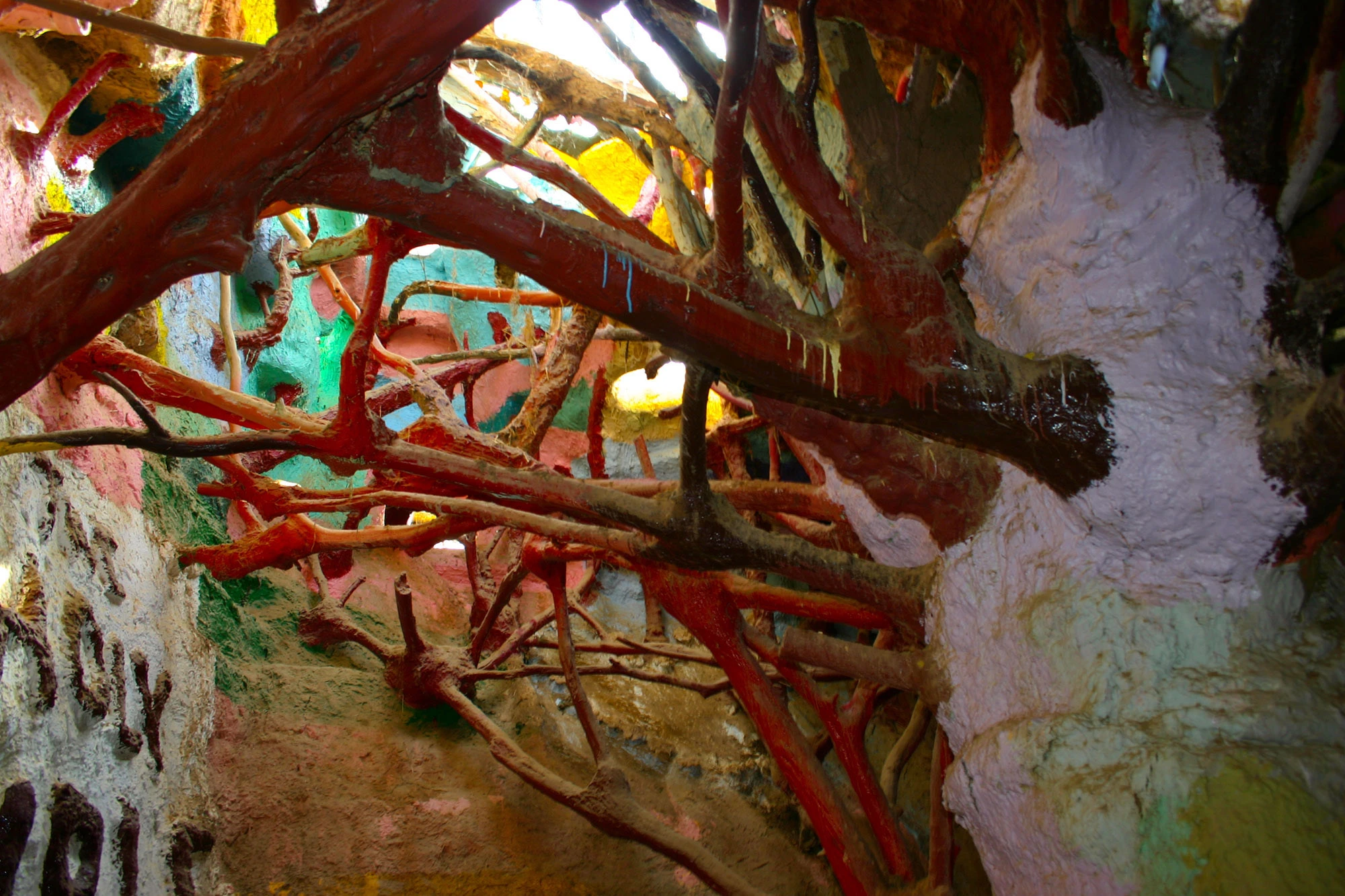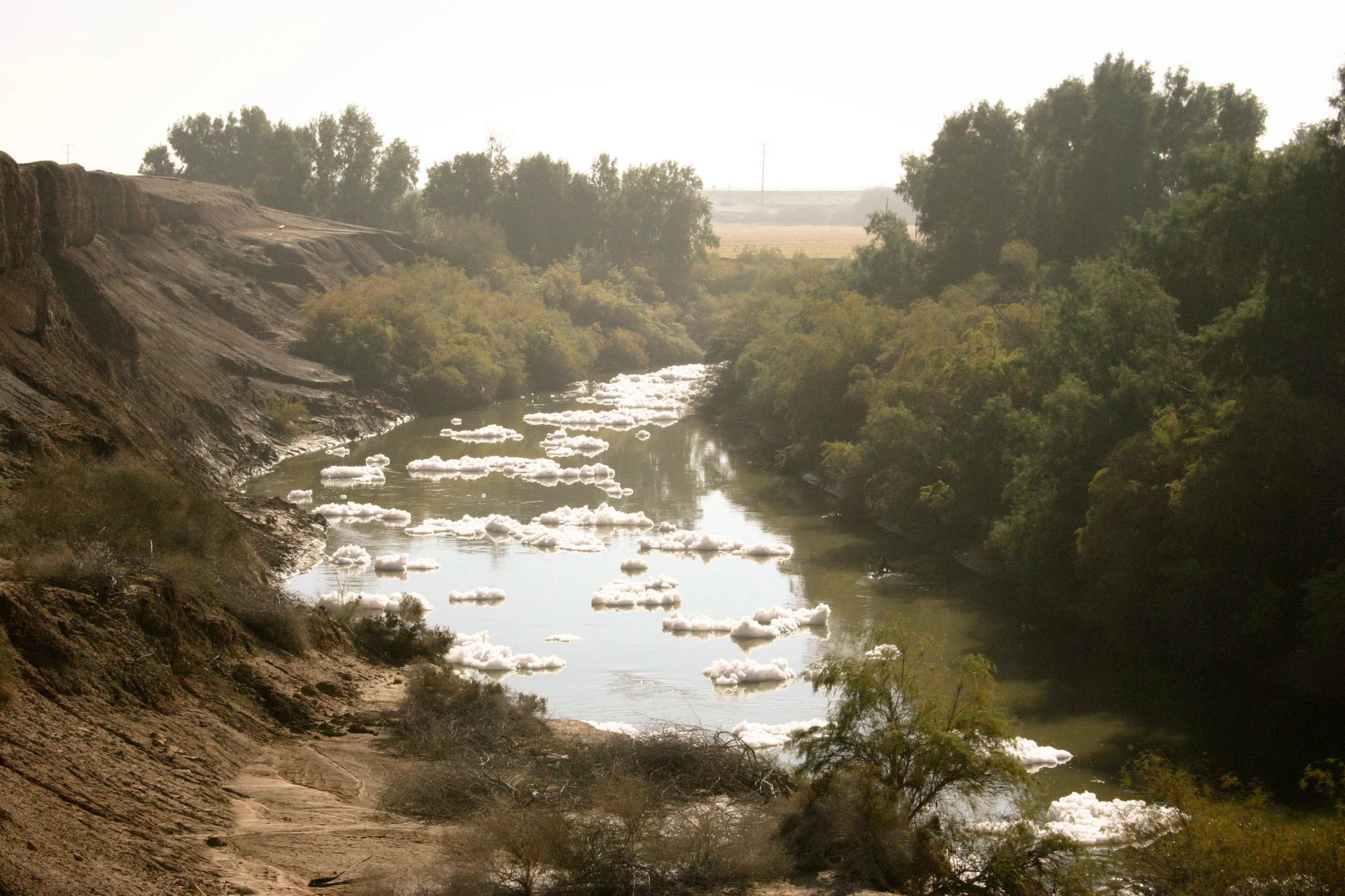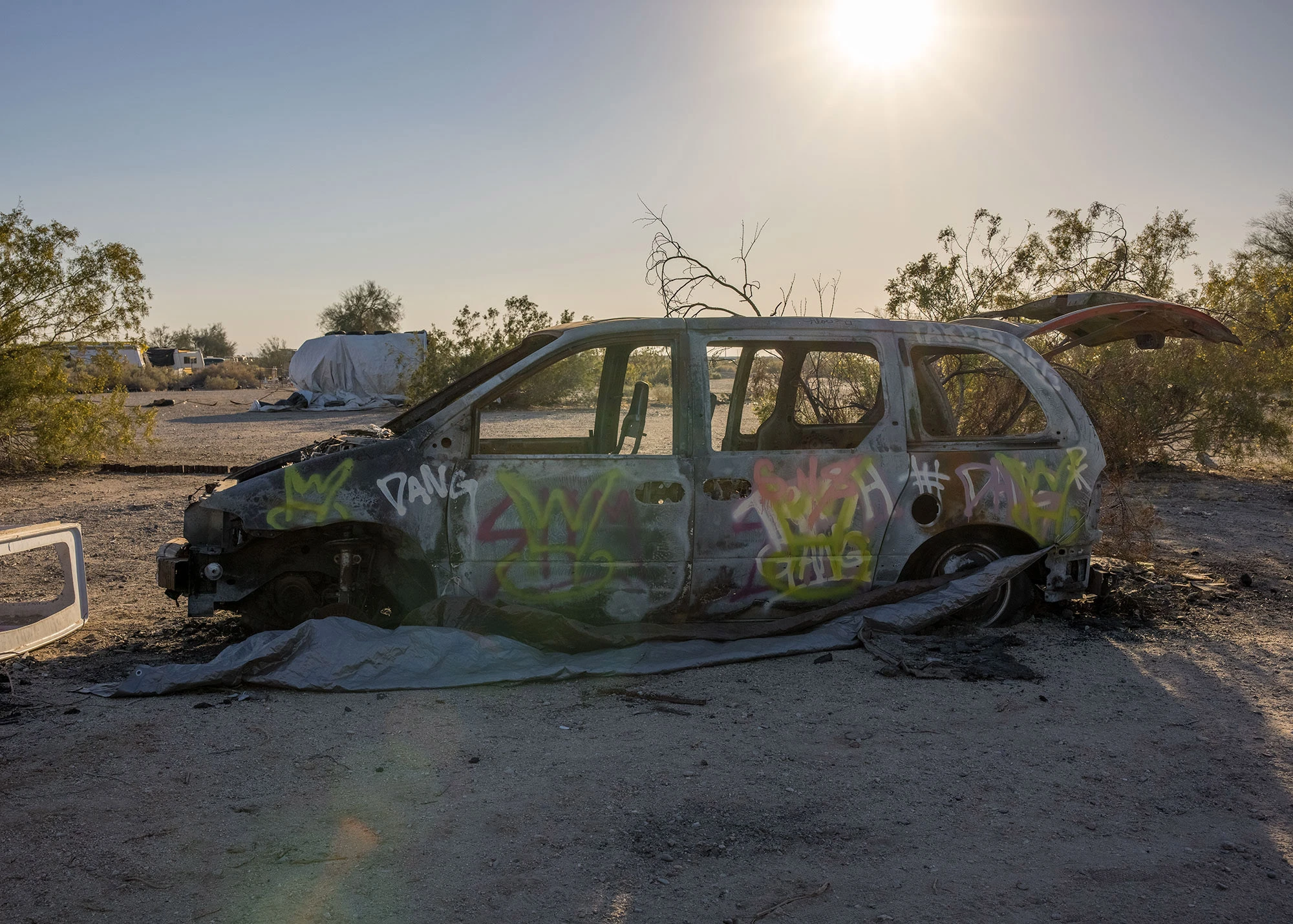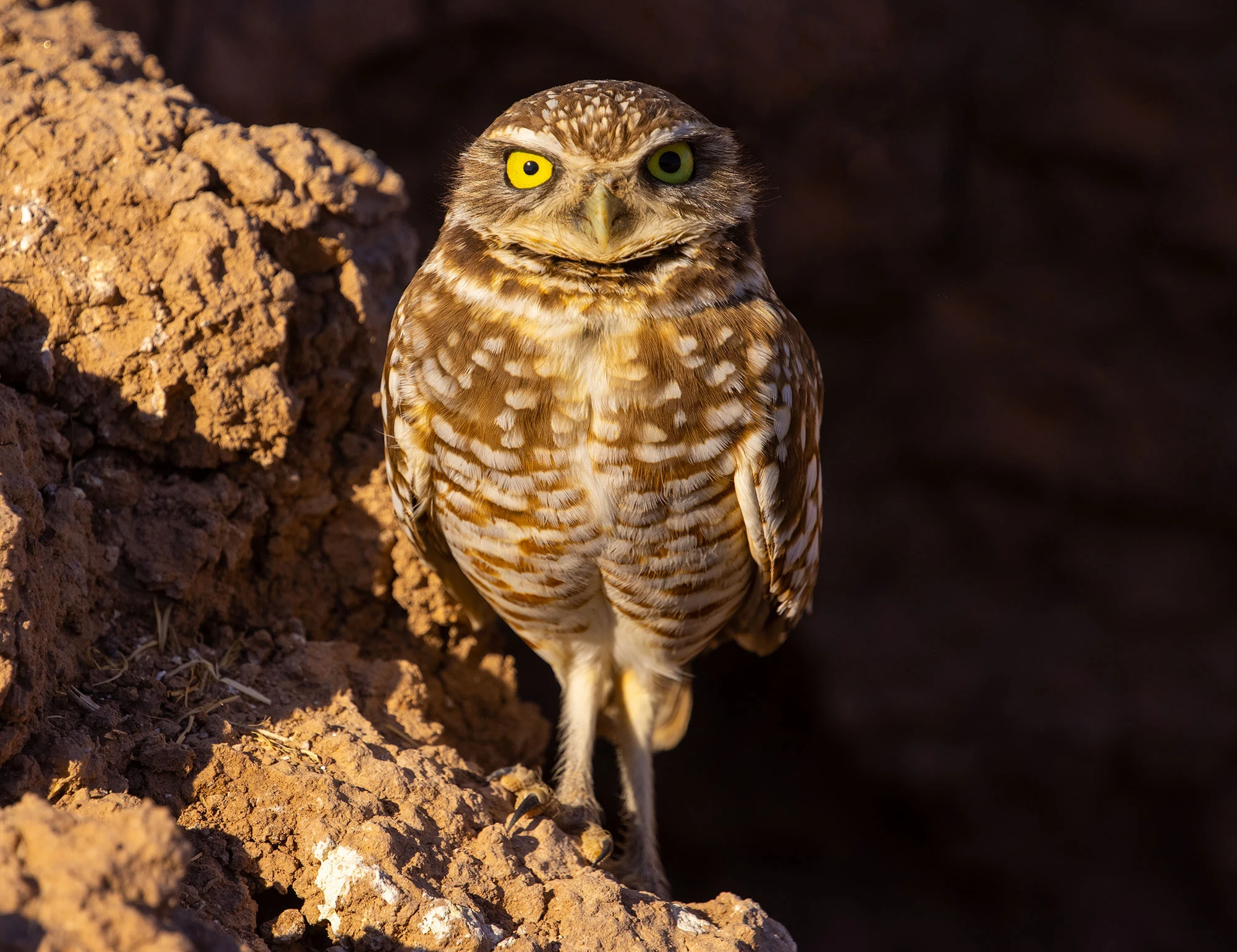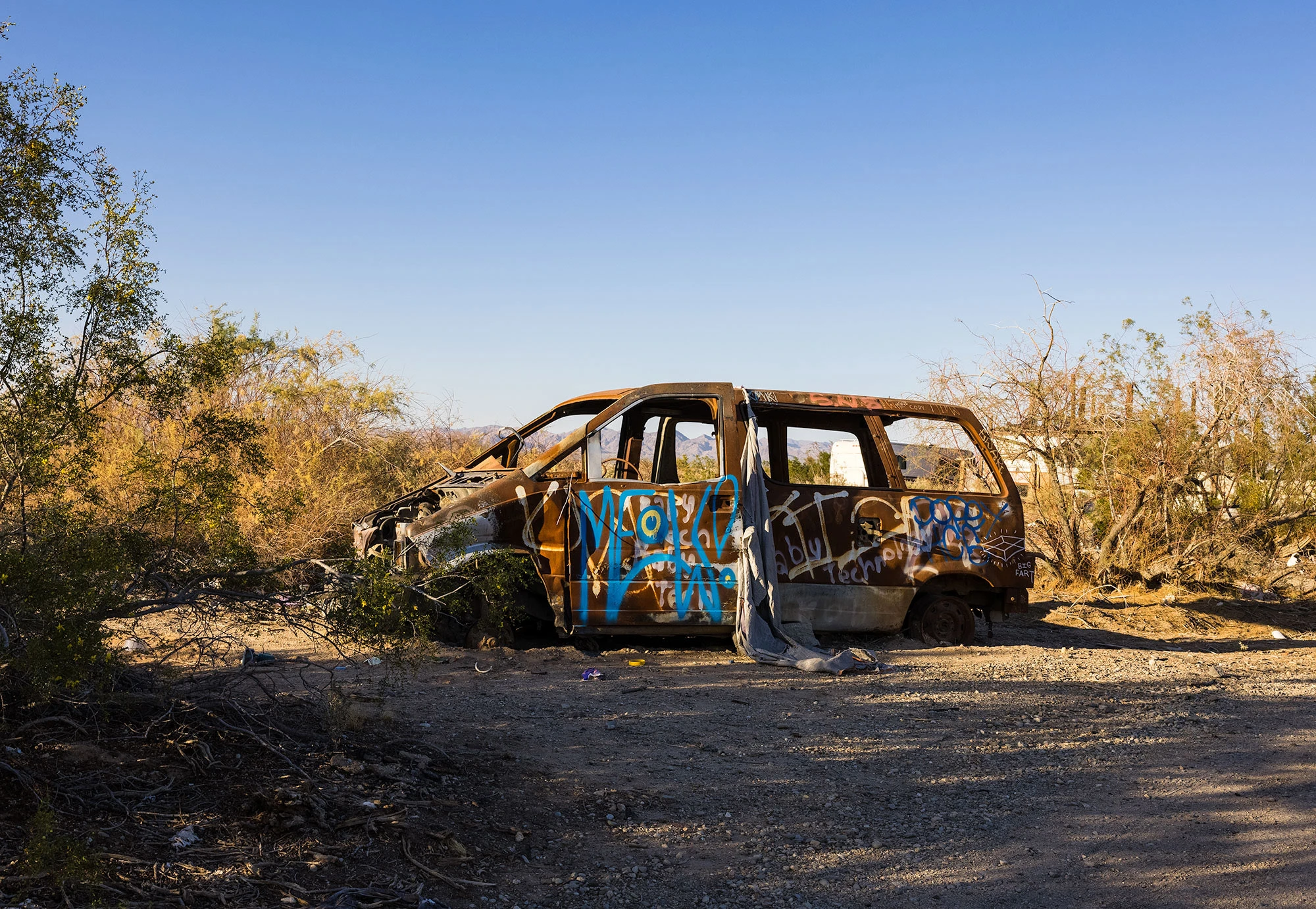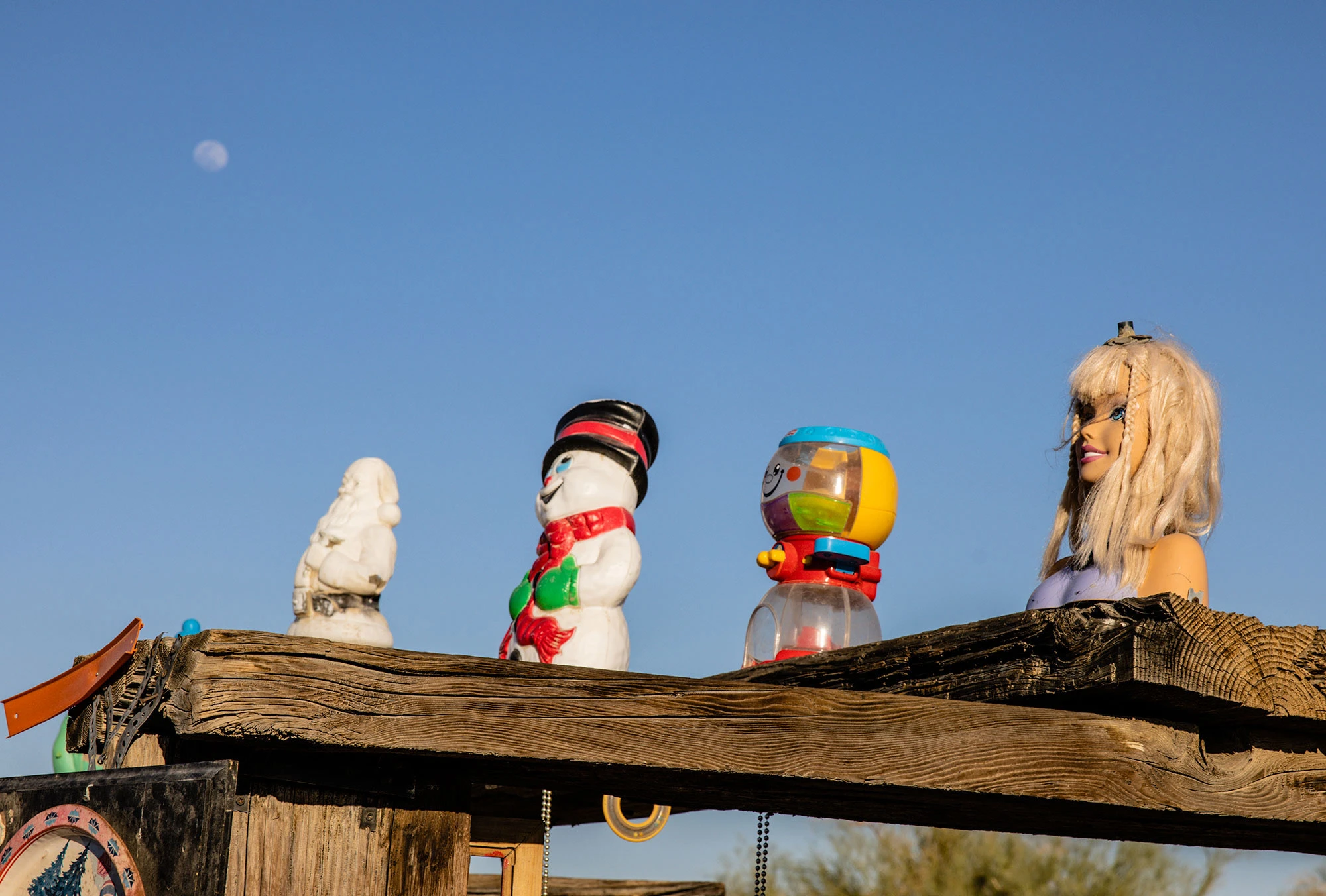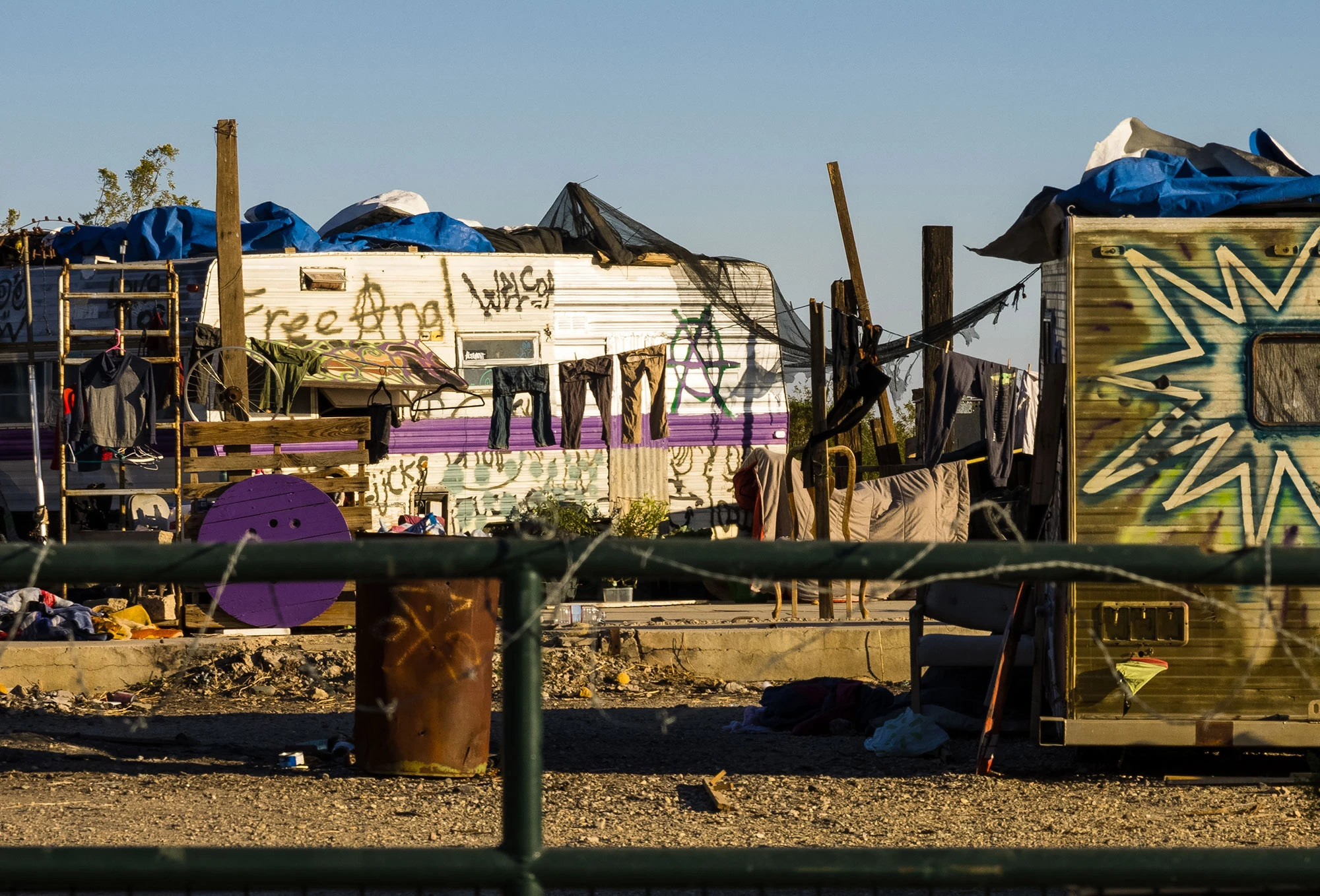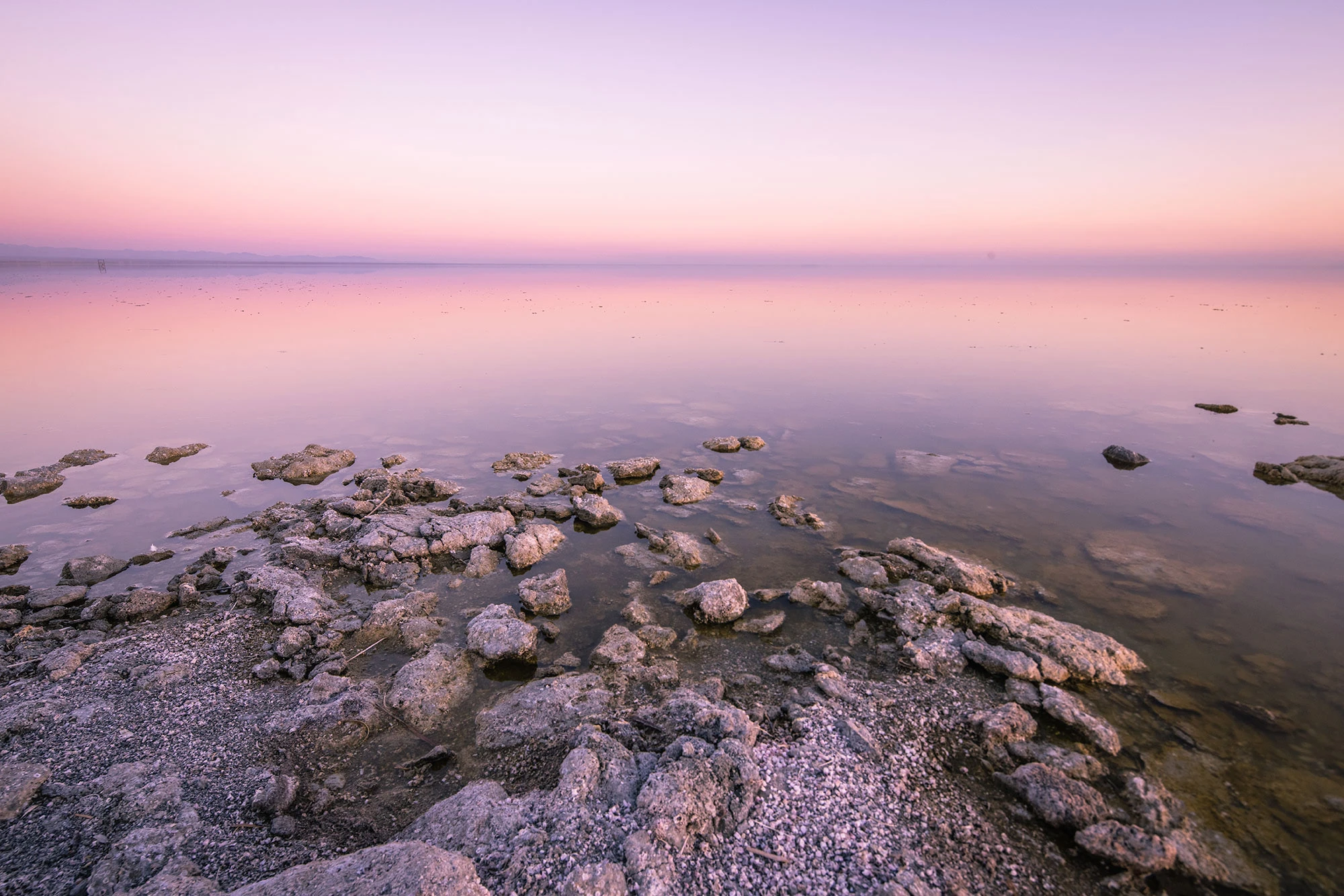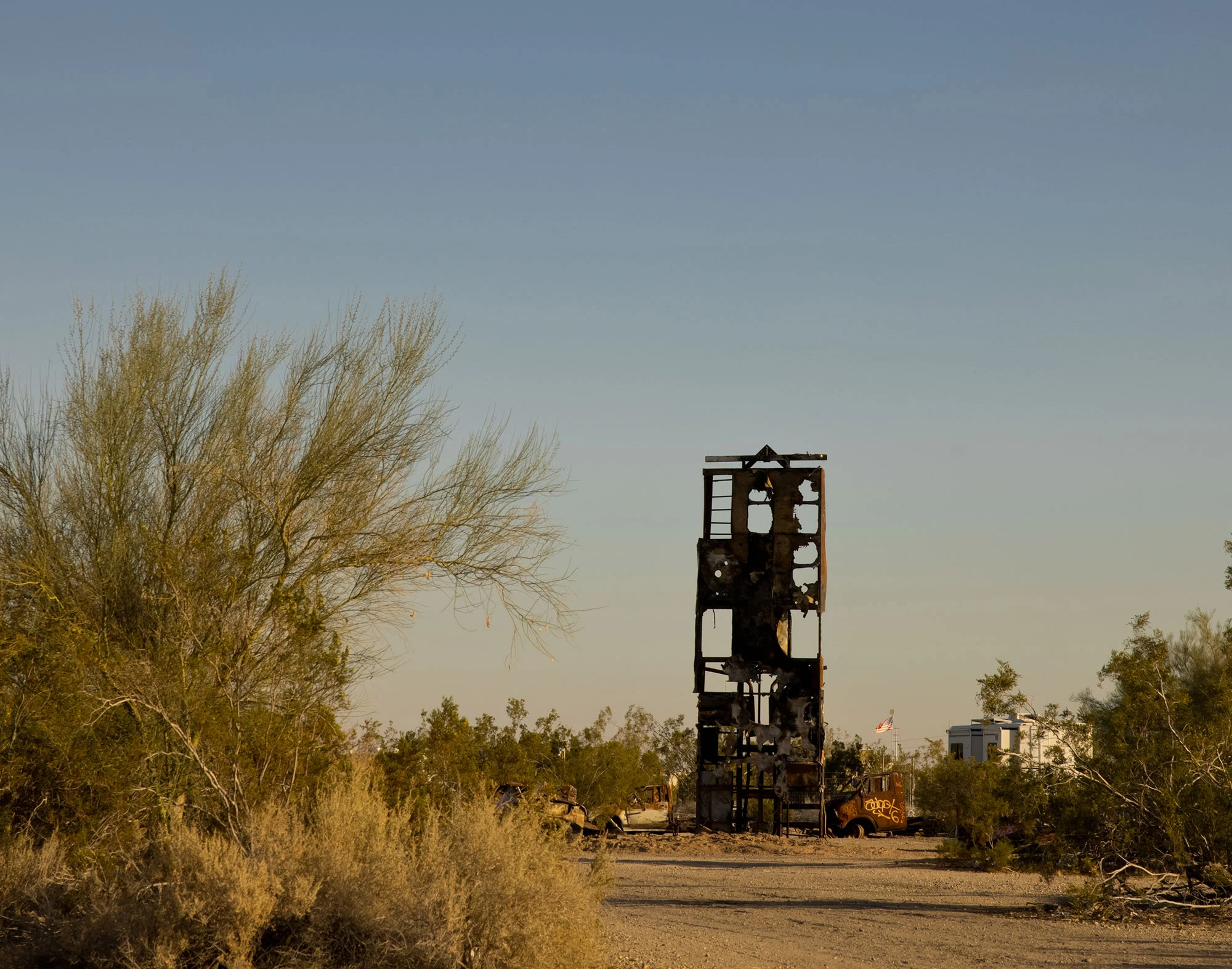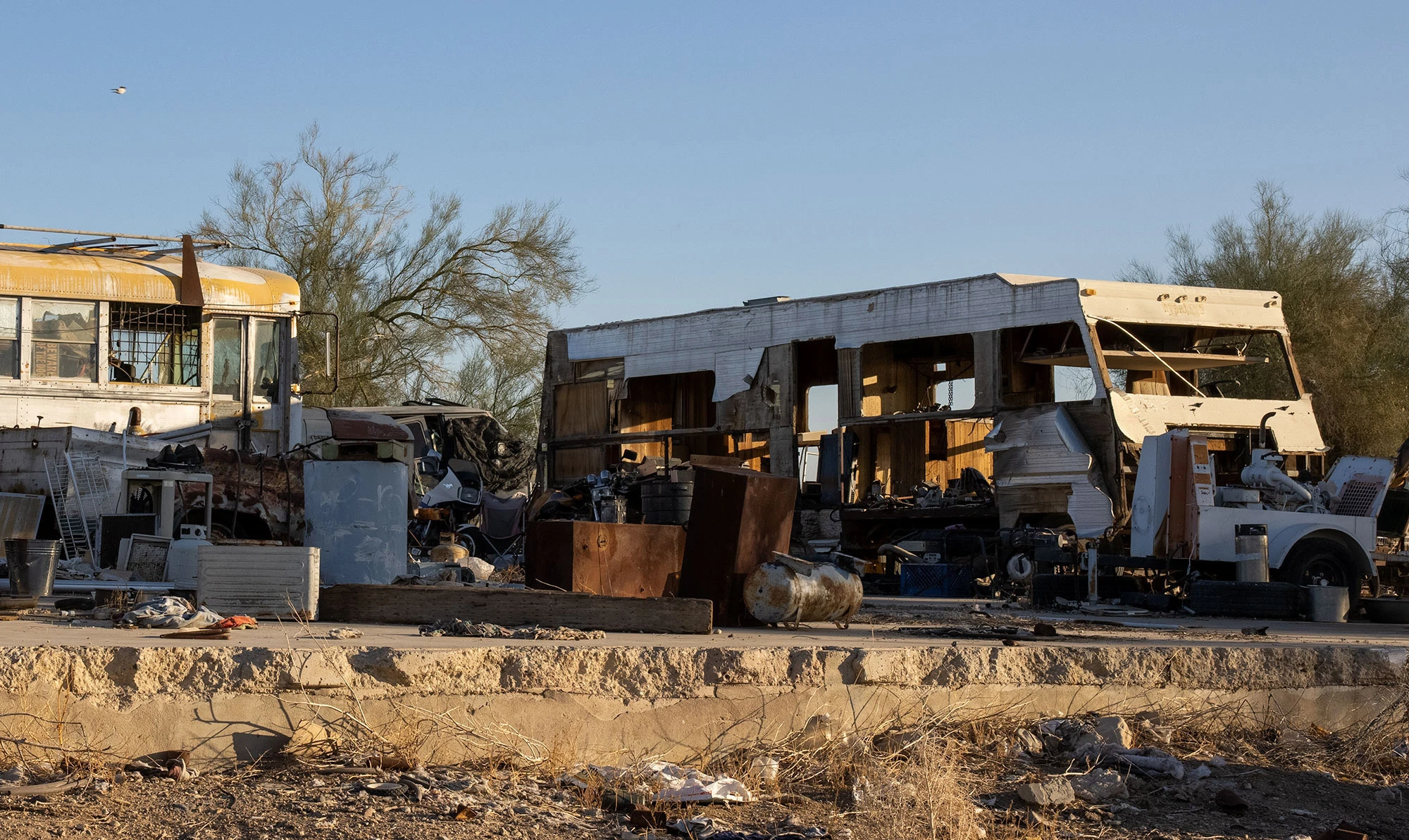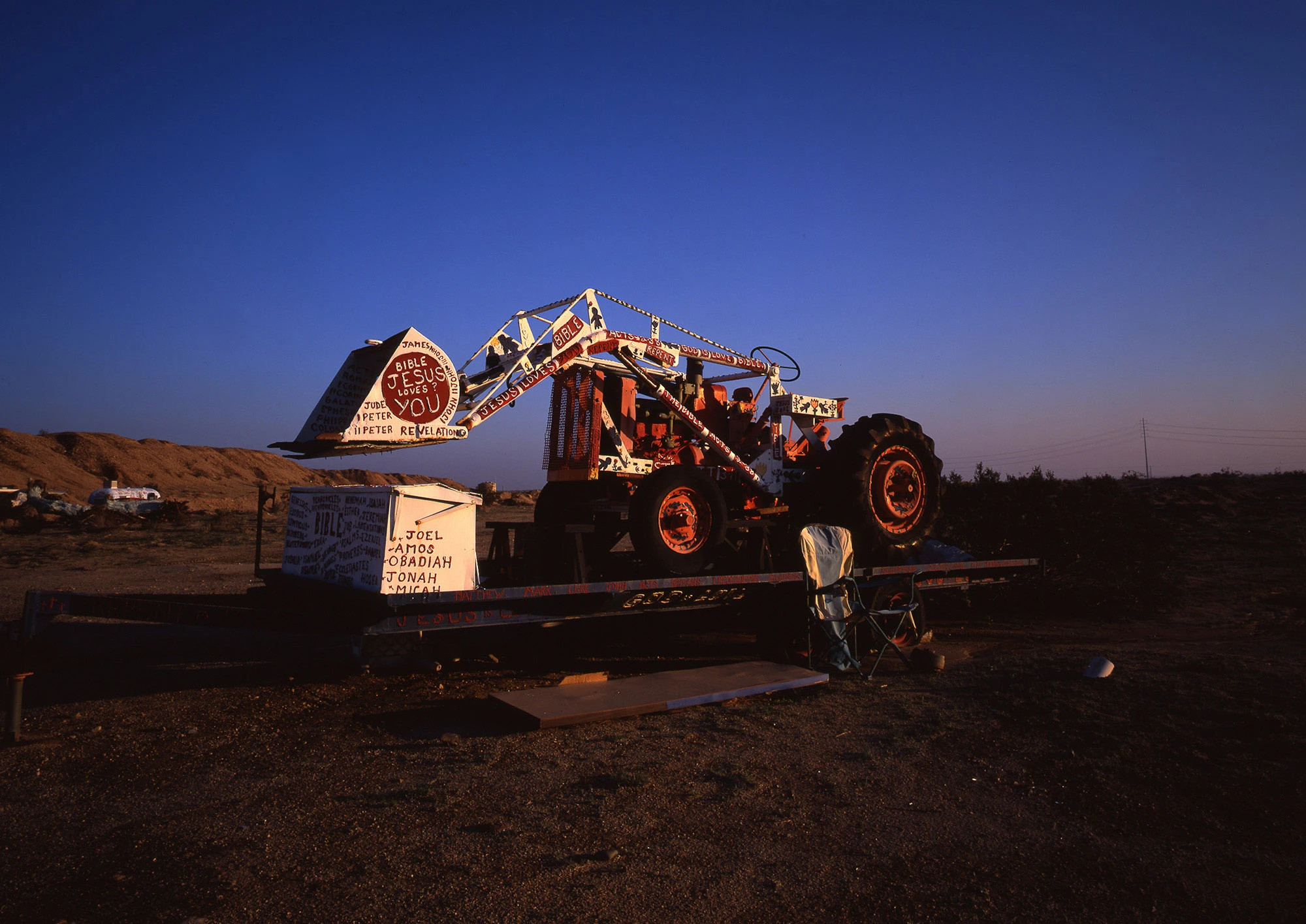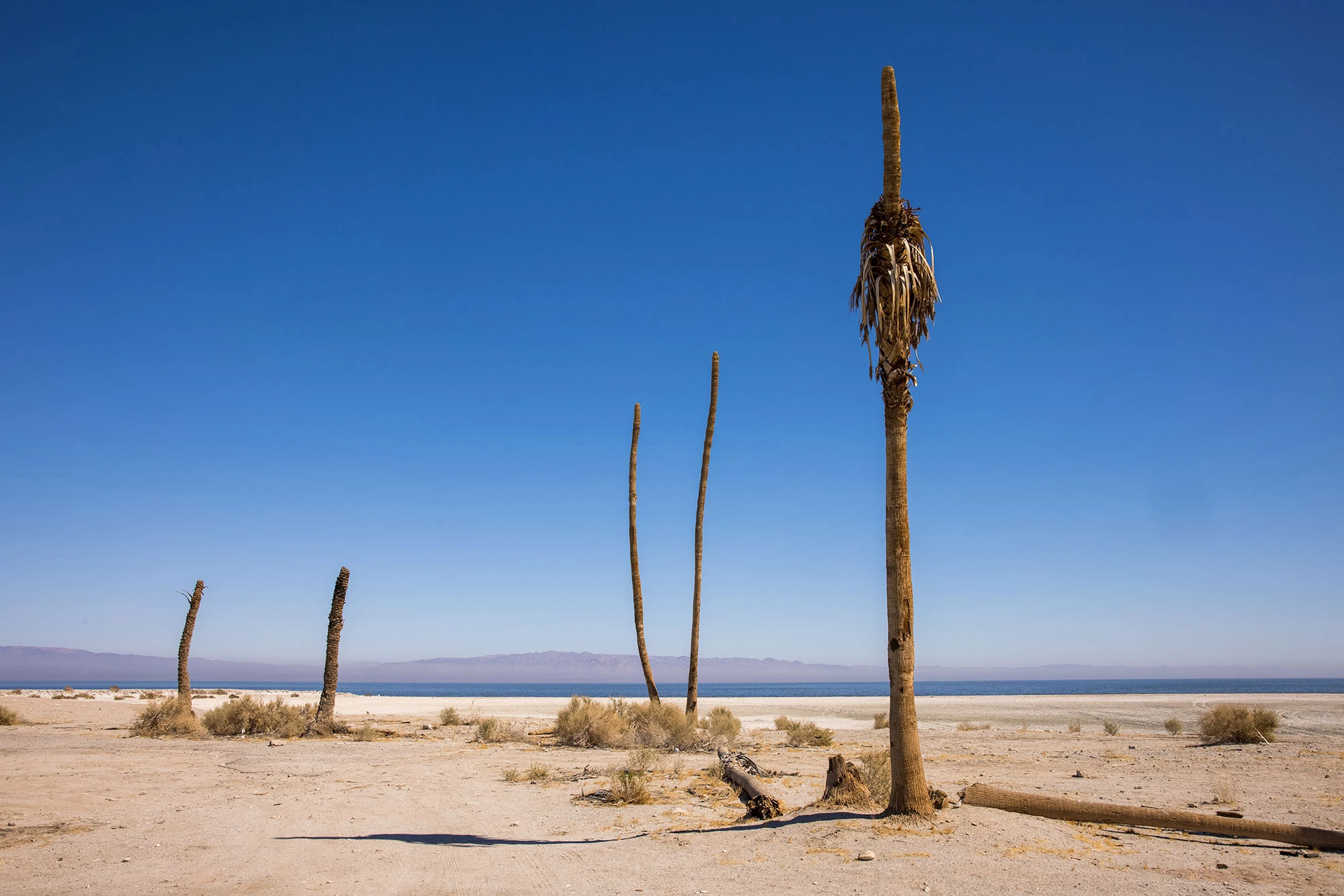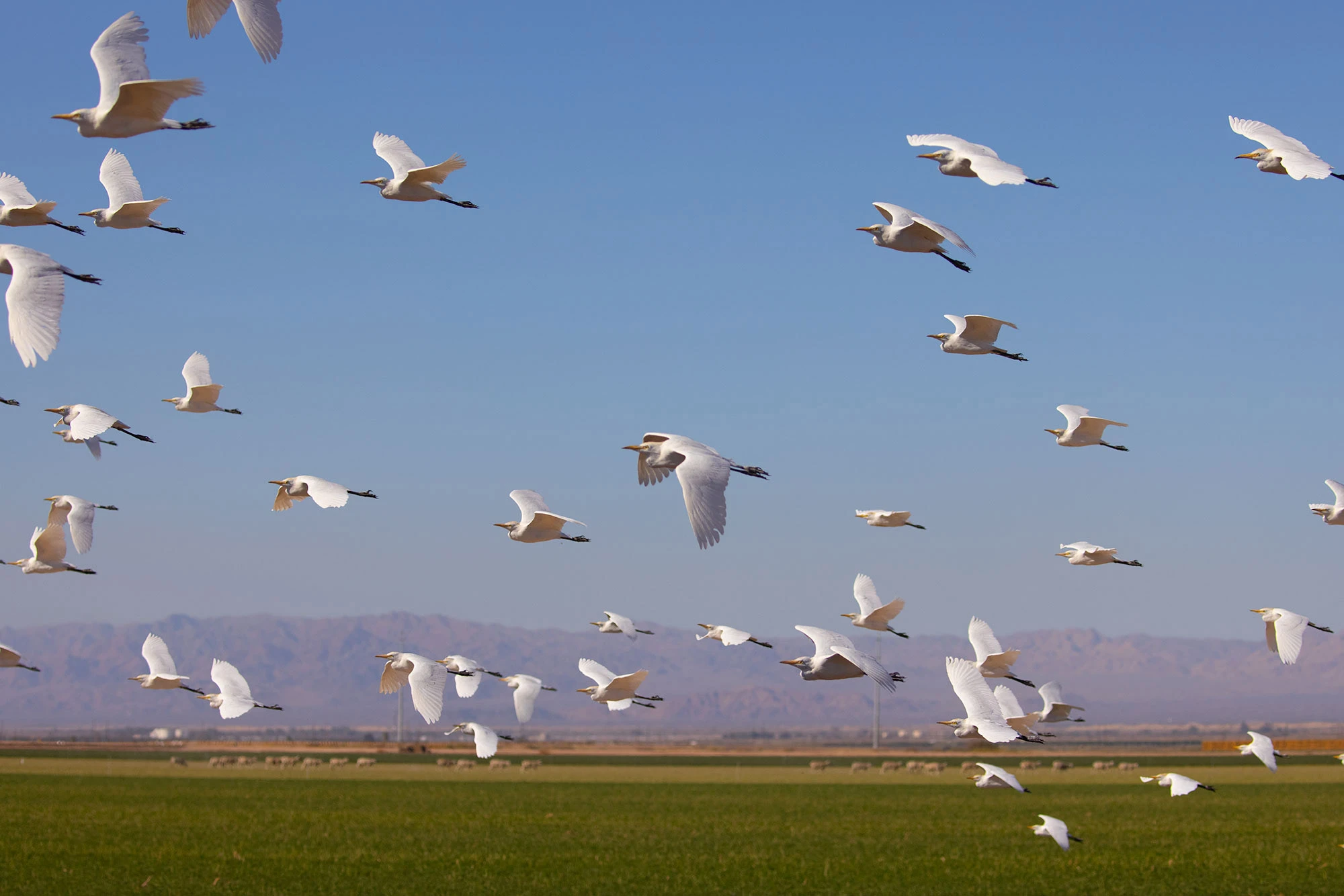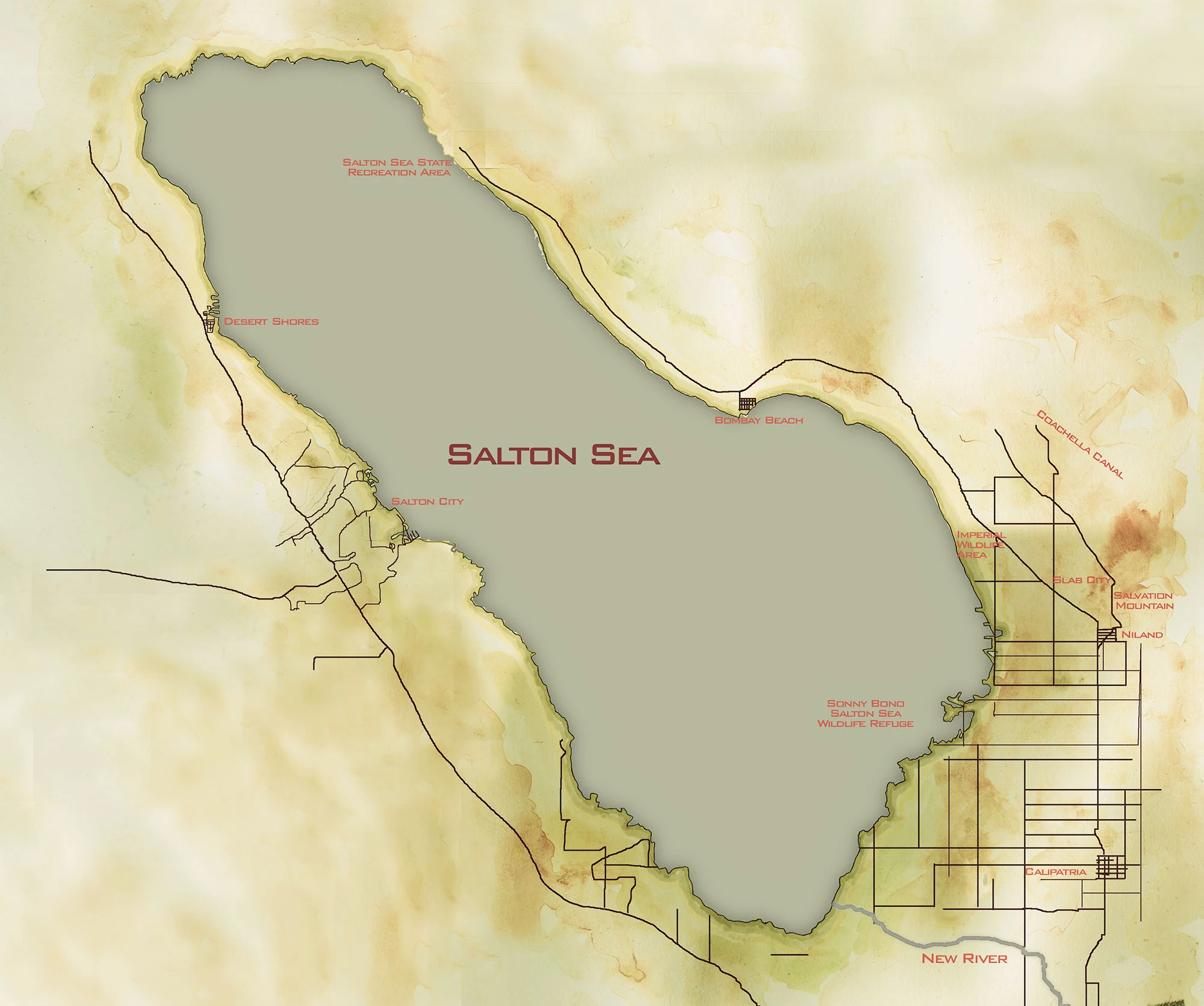Desert Southwest
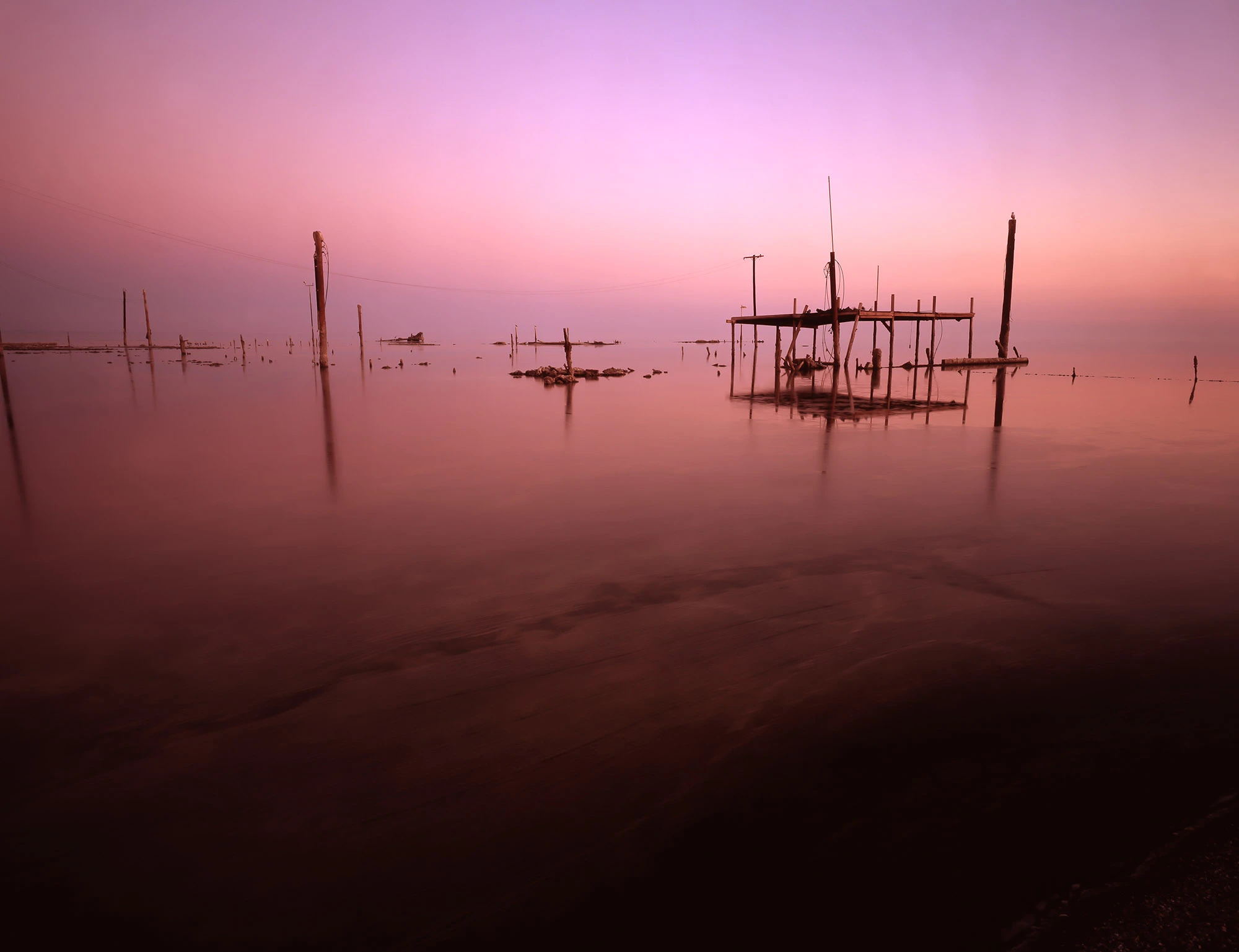
Death and Salvation on the
Salton Sea
In twenty years of exploration along the fabled California sea, I encounter ecological devastation, lawless Slab City, zany prophets, burrow-dwellers, and at last, a bold hope for salvation.
W
ounded sea creatures abound on the seashore of the Salton Sea, this massive lake in California's border region with Mexico. The head of a seagull, still bleeding. But what happened to the rest of it? A very large spinal bone—a cow? But why here? A television set, sitting in the shallow Salton Sea. And beyond, a half submerged construction crane. In this drawn-out milky dusk, the brown-green water laps the shore in the consistency of eggnog.
Touring the Salton Sea in 2002
The shore itself is made of the bones of fish. The crunch and the stink, that's from when all the fish die. The birds die too, in unusual ways. The Salton Sea is one big environmental catastrophe. And I'm on my way to the source. No rush though. I'm on vacation.
Among the filth and, to be honest, this visual terror, wade a number of spectacular birds.
California has lost over ninety-percent of its wetlands to development. This development would have meant that the vast array of bird species, in their Pacific flyway from Canada, Alaska and the Bering Sea to Mexico, Central America and beyond, would lose essential rest stops on their annual migration south.
But the 1905 accident that refilled this then-dried-out lake has become a savior for the migrating birds of the West Coast—a last-minute salvation for one of the world's great migratory routes. The Salton Sea has hosted 380 different bird species.
The problem with the Salton Sea is that it kills what it saves.
Everyday you see dead animals all along the seashore. But some years, these die-offs – birds, fish, whatever, occur in the thousands and millions. Something – many things actually, are quite wrong with the Salton Sea.
Before all this, and by the 1920’s, the Salton Sea had become a Californian tropical destination. It was almost as popular as Yosemite National Park: boaters, vacationers, fishermen, swinging celebrities. But the sea was being poisoned, and by the 1960’s, the smell alone was enough to warrant a gradual exodus.
A few have remained in coastline towns that sometimes resemble the realms of ghosts. Broken down and faded neon signs, nautical-themed bars that open early in the morning. This humanity, more than the wading birds along the shore, color the Salton Sea.
Leonard Knight and Salvation Mountain
I
drive past Calipatria, into Niland, and beyond the trailers and the power plant and that couple sharing a cigarette under the unfinished hall on Main Street. I drive into the open desert, to the place called the Slabs, and onto the bit of land where Leonard Knight has been squatting for the past twenty years.
Leonard Knight, accused of many things.
A Christian fraud, a freak, a lunatic, and a one-man environmental catastrophe. In a way, he is all of these, but in a good way. Leonard is seventy-three years old, and hails originally from Vermont.
He did all sorts of things in his younger life. He taught guitar, he welded. He went off to serve in the Korean war. He came out to the Salton Sea twenty years ago, and started painting a mountain: Jesus, I’m a Sinner, Please Come Upon My Body and Into My Heart.
That mountain is really just a clay hill, but as a canvas, it’s size is overwhelming.
Leonard began painting his Salvation Mountain one day when it was 118 degrees in the fierce Salton Sea summer sun. It was terribly hot, and Leonard was just planning on staying in the area for a few days. Instead of leaving after painting his messages of God, he decided to stay and paint forever.
I bring Leonard a Cactus Cooler, and we sit in the sun talking stories. His painted world—God is Love—expands each year into new creative directions. It's not just a painted mountain anymore, but also an elaborate system of caves made of hay and adobe, and Tatooine-style huts built into the mountain, each a shrine to Jesus, and to Leonard's own salvation.
Leonard shows me the eroded clay on the butte. "This is the best clay in the country," he says, throwing it into a wheelbarrow of water and hay. "And adobe is the best construction material in the world."

